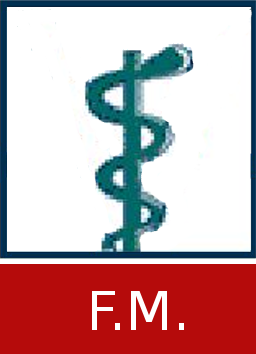Thesis, COLLÉGIALITÉ
Foamkom, Rebby 
Promoteur(s) :
Oury, Cécile 
Date de soutenance : 2-jui-2024 • URL permanente : http://hdl.handle.net/2268.2/20562
Détails
| Titre : | Thesis, COLLÉGIALITÉ |
| Titre traduit : | [fr] Caractérisation de l'activité antibactérienne du ticagrelor, des dérivés pyrimidines et des nouveaux polymères innovatifs contre Staphylococcus epidermidis |
| Auteur : | Foamkom, Rebby 
|
| Date de soutenance : | 2-jui-2024 |
| Promoteur(s) : | Oury, Cécile 
|
| Membre(s) du jury : | Pirotte, Bernard 
Hayette, Marie-Pierre 
Lassaux, Patricia 
|
| Langue : | Anglais |
| Nombre de pages : | 50 |
| Mots-clés : | [en] Nosocomial infection [en] Bacteria [en] Antibiotics [en] Biofilms [en] Biomaterials |
| Discipline(s) : | Sciences de la santé humaine > Multidisciplinaire, généralités & autres |
| Centre(s) de recherche : | GIGA - Metabolism & Cardiovascular biology unit |
| Public cible : | Chercheurs Professionnels du domaine Etudiants |
| Institution(s) : | Université de Liège, Liège, Belgique |
| Diplôme : | Master en sciences biomédicales, à finalité approfondie |
| Faculté : | Mémoires de la Faculté de Médecine |
Résumé
[en] Staphylococcus epidermidis (S. epidermidis) are bacteria present in the human skin and mucosal microbiota in which they play a commensal role. Nevertheless, several events, such as surgical procedures, benefit S. epidermidis entry into the host organism and represent the starting point for their pathogenicity. Their ability to form biofilms on indwelling medical devices and to develop antibiotic resistance renders their eradication challenging and makes them responsible of most nosocomial infections. Ticagrelor, an antiplatelet drug targeting the platelet receptor P2Y12, has been shown to possess interesting antibacterial activity against Gram-positive bacteria. However, due to platelet inhibition, ticagrelor usage increases bleeding risk, which makes it unsuitable for routine antibiotic treatment. Polyurethane (PU), the most used polymer for medical devices manufacturing, shows propensity to facilitate bacterial adhesion, which is the first step of biofilm formation. There is therefore a need for developing polymers with antibacterial and anti-biofilm properties. Moreover, PU synthesis requires the use of toxic precursors (isocyanates), which highlights the need for a switch to safer alternatives, such as non-isocyanate PU (NIPU). In this work, we hypothesized that ticagrelor pyrimidine derivatives, labelled 2329, 2666, 2840 and 2460, devoid of antiplatelet activity, could exert an antibacterial activity against S. epidermidis similar to ticagrelor. We also wanted to know whether NIPUs (named PHOx and Net4) that showed proven biocompatibility, could show reduced bacterial adhesion as compared to conventional PU. Finally, we aimed to assess whether these NIPUs could be impregnated with ticagrelor derivatives, thereby exerting antibacterial activity.
The antibacterial activity of pyrimidine derivatives and ticagrelor was evaluated via the determination of minimal inhibitory and bactericidal concentrations (MIC and MBC, respectively) against S. epidermidis. Their biocompatibility was assessed through a hemolysis assay, and a cytotoxicity assay in the presence of various eukaryotic cells. S. epidermidis adhesion on PHOx and Net4 polymers, as well as PU (medical grade), was analysed by microcalorimetry. These polymers were then impregnated with ticagrelor derivatives and tested for their antibacterial properties. All tests were performed using two laboratory strains of methicillin-resistant S. epidermidis (MRSE).
The results showed that 2329 and 2666 derivatives possessed overall interesting antibacterial activity. The molecules were not cytotoxic at MIC and they did not provoke hemolysis. Moreover, among the two NIPUs tested for bacterial adhesion, PHOx showed significantly reduced bacterial adhesion compared to control polymers. Unfortunately, molecules-impregnated polymers did not display antibacterial properties.
Fichier(s)
Document(s)

 Rebby_Foamkom_Master thesis_2023-2024.pdf
Rebby_Foamkom_Master thesis_2023-2024.pdf
Description:
Taille: 2.04 MB
Format: Adobe PDF
Citer ce mémoire
L'Université de Liège ne garantit pas la qualité scientifique de ces travaux d'étudiants ni l'exactitude de l'ensemble des informations qu'ils contiennent.


 Master Thesis Online
Master Thesis Online




